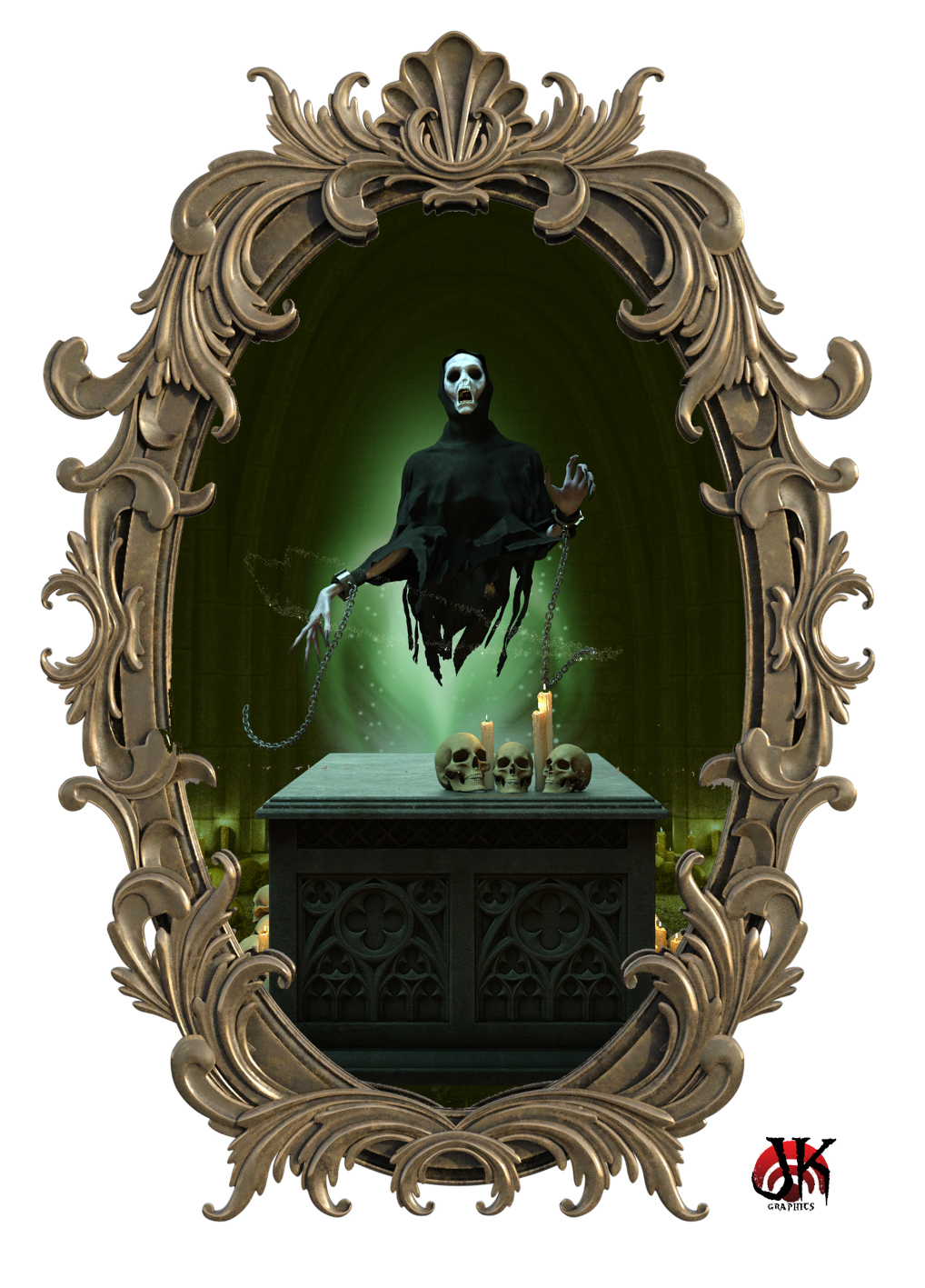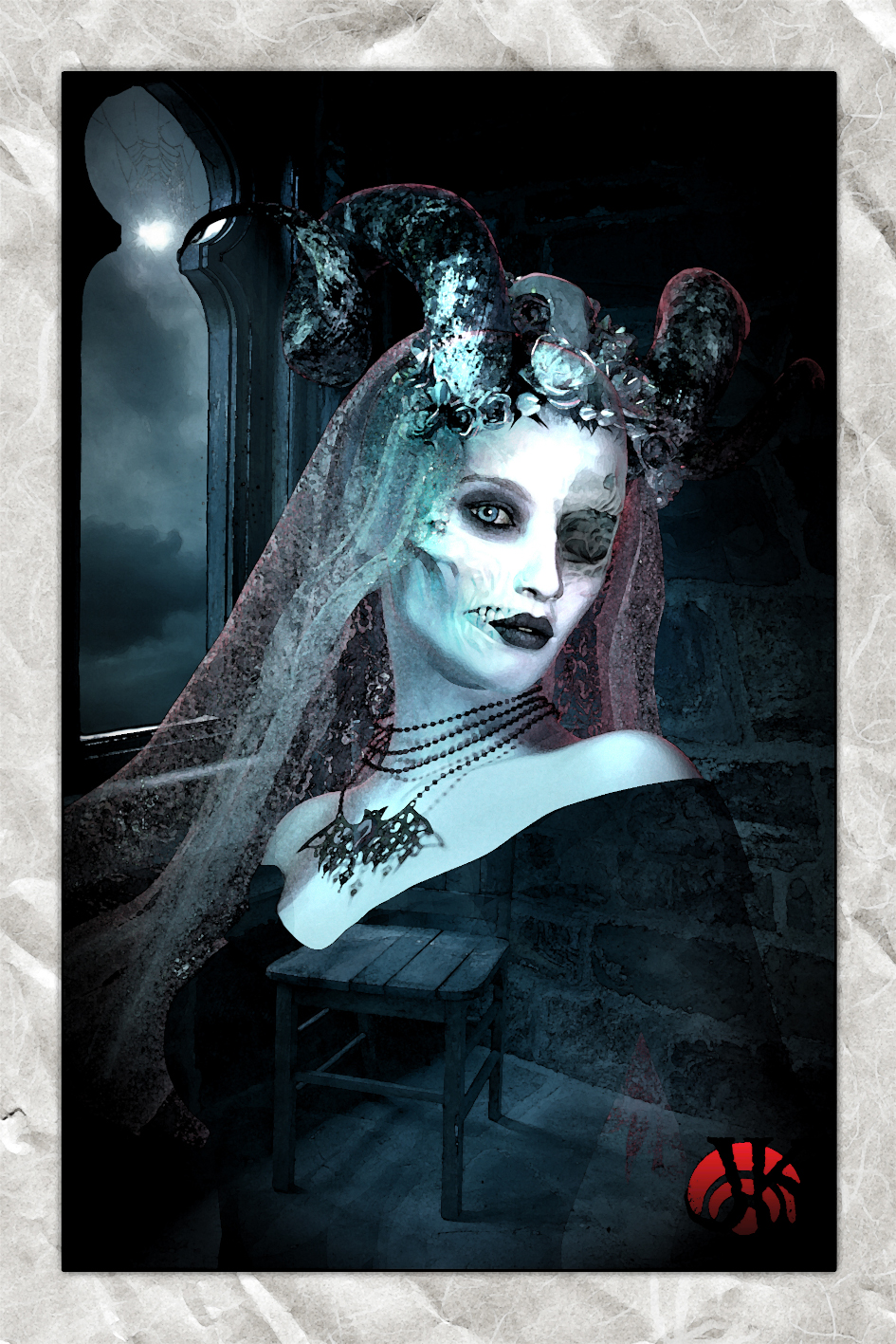
Blessed Salt, Holy Water, and The Many Different Ways to Kill Undead
by Galdor from Threshold Magazine issue 29
Blessed Salt
Blessed Salt does
a little damage to undead (1d4 damage against undead only). However,
when combined with Holy Water it does greater damage than either
separately (3d4 damage against undead).
The first mention of
blessed salt in any writings is during the year AC 160 in the area of
land that is now known as the Emirates of Ylaruam. This manuscript
tells about how a youth of a community went into an apprenticeship to
a Thyatian cleric named Patriarch Augustine. Christened Bartholomew
by Augustine, he learned spells from the cleric, but soon the cleric
left. This Bartholomew grew older and started to explore the Nithian
tombs. These tombs are now known to contain many undead. So
Bartholomew was exploring this tomb with torches, flint, bags, and
preserving materials which included salt, and encountered a mummy.
After trying to attack it with torches, he blessed the last item he
had and that was the salt. This salt, which was blessed, most likely
just finished off the mummy after the fire and the spells did most of
the damage.
In the lands that are now The Duchy of Karameikos,
a Thyatian cleric, Patriarch Cornelius, records that holy water in
the Traladaran territories nearer the coast is more efficient than
regular holy water. The cleric suggested that it had something to do
with using salt water.
Now that you know a small part of the
history of blessed salt we will go into its making process. The
creation of blessed salt is a tedious process of first purifying the
salt and having a decent amount to do something with. After gathering
it and purifying it you first have to bless it twice (the second time
to make sure all the salt is blessed) after that you have to put it
into a ceremonial bowl for a day. Then to combine blessed salt and
holy water use a purifying spell (purify food and water). This
is a portion of the history and how to create blessed salt for all
you wandering clerics out there.
Holy Water
Holy Water is
such a common item that most people think that everyone makes it the
same way in every country. There are also many different variants of
the process in each country.
The Grand Duchy of Karameikos’s
way of making holy water is quite a short process compared to other
techniques. Three clerics first gather the water in a ceremonial
bowl. Then they start chanting the Song of Halav and each blessing it
in a different way than the other. This process usually takes about
an hour but in some cases as when using a larger bowl it takes
longer. Of course the exact blessings are only told to those of The
Church of Traladara and some in the Church of Karameikos know of them
too.
The Emirates of Ylaruam have a longer process, completely
based on The Dream of the Garden in the Desert. First a cleric must
find water through faith by using a spell to find water. Then the
cleric recites parts of the Nahmeh, blessing the water after every
verse. All of this takes a day more or less depending on how fast the
cleric finds water.
In the Golden Khanate of Ethengar there are
three processes to make holy water. The first and most common process
is used by clerics of Yamuga the Yurt Dweller. First the cleric
gathers grass from the Land of Purple Grass and then he fills a
ceremonial bowl with water. Finally the cleric sprinkles the grass
around the bowl while speaking the many miracles of Yamuga the Yurt
Dweller. The second and shortest process is used by the clerics of
Tubak the Lawgiver. The cleric prepares for the blessing of the
water. The cleric starts blessing the water during the twilight
hours. The last and most cruel process is used by the clerics of
Cretia, The Lord of Chaos. The cleric splatters the blood of freshly
killed men on the battlefield around and in the water while praising
the works of Cretia. These are just a few of the many processes used
to make holy water in the Known World.
Different Ways to Kill Undead
 There
are many different and sometimes unconnected ways to kill undead.
Let’s start with the weakest of the undead and work to the
strongest.
There
are many different and sometimes unconnected ways to kill undead.
Let’s start with the weakest of the undead and work to the
strongest.
Skeleton: Skeletons have no specific thing that they are killed by since they are easily killed.
Zombie: Zombies can be killed by lead since their minds are so weak that it stops their thought process.
Ghoul: In Ylaruam it is said that a ghoul can be killed simply by hitting it with a sword at its clavicle. Though to prevent someone from turning into a ghoul is to salt down the whole body until every part of their body is covered with salt.
Wight: Wights can be killed by an underabundance of life around them since they feed on life. So bring as few people as possible when hunting them. They can be easily killed by quicksilver (doing 1d4 damage each turn), though it is toxic to humans too. Other than that, run away from them if you’re an elf.
Wraith: Wraiths can be killed by several toxic gases such as nitrogen dioxide and carbon monoxide, even though the same gases are toxic to humans, they do more damage repeatedly (1d6 damage).
Caption:
Wraith by Jeffrey Kosh
(https://jeffreykosh.wixsite.com/jeffreykoshgraphics/home)
Mummy:
Mummies can be killed by healing spells doing the same amount of
damage to them as they would healing to the living. Fire does
continual damage (1d2) after the initial hit.
Spectre: Spectres can be killed by the same things as wraiths since they are both ghostly and permeable.
Vampire: Vampires are able to be killed by a plethora of things such as: decapitation in human form, salt in any form, and wood from a cypress tree in bat or wolf form.
 Phantom:
Phantoms can be killed by opera music but only if the music is
performed by professionals, not by a regular adventuring group,
however a group of bards could use their talents.
Phantom:
Phantoms can be killed by opera music but only if the music is
performed by professionals, not by a regular adventuring group,
however a group of bards could use their talents.
Apparition: Apparitions can be killed by quicksilver just like wights though it does less damage (1d4-1 each turn).
Shade: Shades can be killed by passing over a small, sluggish lake in a mountain pass.
Vision: Visions can be killed by somehow getting one out of its specific area.
Haunt: Haunts can be killed by blessing the place where they died multiple times.
Banshee: Banshees can be killed by cold, unforged, magical iron hitting its head.
Ghost:
Ghosts can be killed by something that was involved with their death
or something that could have saved them at the time of their death.
Caption:
Ghost by Jeffrey Kosh
(https://jeffreykosh.wixsite.com/jeffreykoshgraphics/home)
Poltergeist:
Poltergeists can be killed easily if there is nothing around them
for the poltergeist to throw.
The higher level undead have not been experimented with enough to find out what could kill them. All methods that were listed have been reported multiple times by adventurers. Try these methods with your own judgement since adventurers are known for their tall tales. So good luck and happy exorcism.